A one-of-a-kind experience of
shared sacred space on the West Coast
Resources & Links
Vicarious Pilgrimages - labyrinths, maps, mandalas
In this video from our Spiritual Care and Ethical Leadership series, Dr. Baush reflects on how the ancient practice of tracing a labyrinth can help us find a moment of peace and solace in times of mourning, difficulty, and crisis.
Art & Pilgrimage lectures
Kathryn Barush (director); a talk on water collected on pilgrimage and incorporated into installation art & assemblage – and how this can help foster a greater awareness of the pressing environmental issues we are facing as a global community. Via Bridge Projects in LA
Kathryn Barush (director); GTU annual Reading of the Sacred Texts lecture on healing, protective, and mnemonic capacity of music as used in the context of religious pilgrimage.
The “pilgrim box” featured in this talk was assembled during a 19th-c. missionary trip to the Holy Land. Before arriving in its current home at the Buffalo Museum of Science, the box and its contents were used in multiple ways, their meaning and significance changing according to circumstance.
This presentation by Dr. Elizabeth Peña (Director, Center for the Arts and Religion and Doug Adams Gallery, GTU) was created for the 2022 Society for Historical Archaeology conference, to honor the memory of Professor Mary C. Beaudry, an instrumental figure in the field of historical archaeology and a respected and beloved mentor.
Kathryn Barush Institute for Pilgrimage Studies at the College of William & Mary 2021 Virtual Symposium / Panel: North American Pilgrimage (with Sharenda Barlar & Kip Redick) Pilgrimage in a time of pandemic: Backyards, Maps, and Apps.
While place-based pilgrimage is an embodied practice, this brief presentation posits that it can be experienced in its fullness through artworks including built environments, assemblages of souvenirs, and collective viewing.
A panel discussion with Dr. Tasim Kassam, Dr. Vijaya R. Nagarajan, and Dr. Kathryn Barush on sacred art as a medium for interreligious dialogue, and art as ‘ocular circumambulation’ – as part of the exhibition Drawing the Soul Towards Truth: Muslim and Hindu Sacred Geometry at the Center for the Arts and Religion (CARe), Berkeley
Dr. Laura Dunn, Seeing, Sensing, and Shaping Śakti: The Embodied Hermeneutics of Tantric Sādhanā at Samādhi Mandir in Ganeshpuri, India
Zuber, Devin. “Walking, Talking Mount Tam: Esoteric Cartographies in the San Francisco Renaissance.” Colloquium lecture for the graduate program at the Institute for North American Studies, University of Frankfurt, Germany. December, 2021.
Zuber, Devin. “Mapping the Spiritus Mundi: Esoteric Cartographies in Robert Duncan’s Poetics.” International Conference T(r)opologie: die Relationalität textueller Räumlichkeit. Humboldt Univ ersity of Berlin, Germany. February, 2019.
Zuber, Devin. “Greening the Jerusalem Code in America:Emanuel Swedenborg and Urban Environmental Imaginaries.” Tracing the Jerusalem Code: Christian Cultures in Scandinavia. International Conference at the Norwegian School of Theology, Religion, and Society. Oslo, Norway. December, 2018.
Zuber, Devin. “Thoreau Walks Berlin & Zuccotti Park.” Talk at Annual Conference of the German Association for American Studies (Deutsche Gesellschaft für Amerikanistik), University of Würzburg, Germany. June, 2014.
Zuber, Devin. “Sanctimony, Memorials, and Sanctification: the Sacred and Profane in Re-membering Ground Zero.” Invited talk for 9/11 Ten Years After: History, Narrative, and Memory. Organized by the Consulate General of the U.S. Bavarian American Academy, Munich, Germany. June, 2011.
Zuber, Devin. “Vistas, Panoramas, and the Picturesque: Walking (through) Romantic Ecopoetics.” In-situ lecture and walking-tour of Marin Headlands. Desire Trails Program at the Headlands Center for the Arts, Sausalito, California. October, 2011.
Zuber, Devin. “Walking the Streets of Woe: William Blake, Swedenborg, and the Visionary City.” Invited talk for Trinity Term Lecture Series, History of Art Department, Oxford University, England. April, 2008.
Zuber, Devin. “Out of Paris, into the Favela: Transcultural Poetics of the Urban Flâneur.” Talk at international conference Transcultural Spaces: Challenges of Urbanity, Ecology, and the Environment in the New Millenium, JFK Institute for North American Studies, Free University, Berlin, Germany. October, 2008.
Book Projects
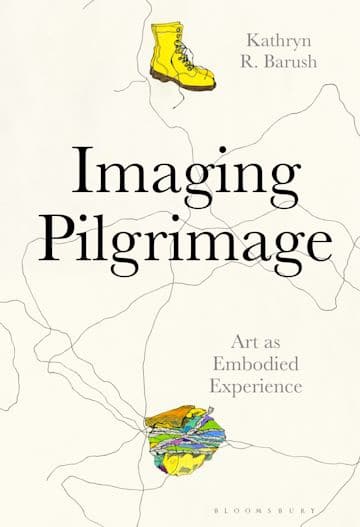
Imaging Pilgrimage
Art as Embodied Experience
Kathryn R. Barush
While place-based pilgrimage is an embodied practice, can it be experienced in its fullness through built environments, assemblages of souvenirs, and music? Imaging Pilgrimage explores contemporary art that is created after a pilgrimage and intended to act as a catalyst for the embodied experience of others. Each chapter focuses on a contemporary artwork that links one landscape to another-from the Spanish Camino to a backyard in the Pacific Northwest, from Lourdes to South Africa, from Jerusalem to England, and from Ecuador to California. The close attention to context and experience allows for popular practices like the making of third-class or “contact” relics to augment conversations about the authenticity or perceived power of a replica or copy; it also challenges the tendency to think of the “original” in hierarchic terms.
Imaging Pilgrimage brings various fields into conversation by offering a number of lenses and theoretical approaches (materialist, kinesthetic, haptic, synesthetic) that engage objects as radical sites of encounter, activated through religious and ritual praxis, and negotiated with not just the eyes, but a multiplicity of senses.
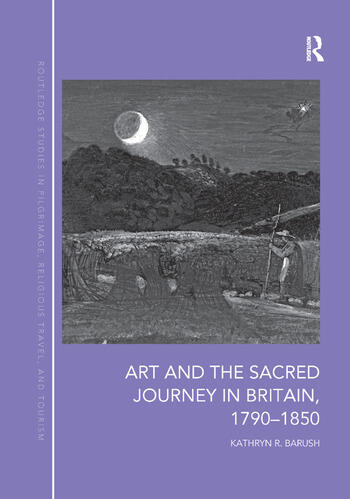
Art and the Sacred Journey in Britain, 1790-1850
Kathryn R. Barush
The practice of walking to a sacred space for personal and spiritual transformation has long held a place in the British imagination. Art and the Sacred Journey in Britain examines the intersections of the concept of pilgrimage and the visual imagination from the years 1790 to 1850. Through a close analysis of a range of interrelated written and visual sources, Kathryn Barush develops the notion of the transfer of ‘spirit’ from sacred space to representation, and contends that pilgrimage, both in practice and as a form of mental contemplation, helped to shape the religious, literary, and artistic imagination of the period and beyond. Drawing on a rich range of material including paintings and drawings, manuscripts, letters, reliquaries, and architecture, the book offers an important contribution to scholarship in the fields of religious studies, anthropology, art history, and literature.
Academic Articles
Barush, ‘The Afterlife of Becket in the Modern Imagination’ in the Journal of the British Archaeological Association, Vol. 173, 2020: The Cult of Saint Thomas Becket: Art, Relics and Liturgy in Britain and Europe (ed. Tom Nickson in conjunction with the exhibition Thomas Becket: Murder and the Making of a Saint at the British Museum (20 May 2021-22 August 2021)
Zuber, Devin. “topos / typos / tropos: Tracing Robert Duncan’s Field Poetics on/around Mount Tam.” Chapter contribution to T(r)opologie: die Relationalität textueller Räumlichkeit. Edited by Martina Bengert and Andre Otto. Paderborn: Wilhelm Fink Verlag (Brill Academic), 2022 [forthcoming]
Zuber, Devin. ”At the End of the World (in a Van): Chloe Zhao’s Nomadland.” Counterpoint: Navigating Knowledge (Fall 2021)
Zuber, Devin. “‘Those Almost Uninhabited Shores’: John James Audubon and the Violence of Space.” Essay in exhibition catalogue and DVD chapbook The Audubon Trilogy: Delineations of American Scenes and Manners (Cairo, New Madrid, West Point), by Jacob Cartwright and Nick Jordon. Manchester, UK: Cornerhouse Publications, 2010.
Zuber, Devin. “Satanic Mills and Jerusalem Redeemed: William Blake’s Urban Ecopoetics.” Green Letters 10 (Winter 2008 / 2009). Edited by Rupert Hildeyard. Journal of the Association for the Study of Literature and Environment (United Kingdom). 39-49.
Zuber, Devin. “Flânerie at Ground Zero: Aesthetic Counter-Memories in Lower Manhattan.” American Quarterly 58:2 (June 2006). Edited by Marita Sturken. Journal of the American Studies Association. 269-299.
Newspaper & Magazine Articles

‘No Boots Required’ – a virtual pilgrimage through the zines of London-based artist and filmmaker Chiara Ambrosio in the Brooklyn Rail
Virtual Pilgrimages
Tom’s St. Cuthbert Pilgrimage
Collaborations
Glastonbury Way Virtual Pilgrimage GPX Map App & annotated essay (June 2021)
A project in collaboration with the British Pilgrimage Trust and Glastonbury Pilgrim Centre featured in the Guardian
Exhibitions and Collections
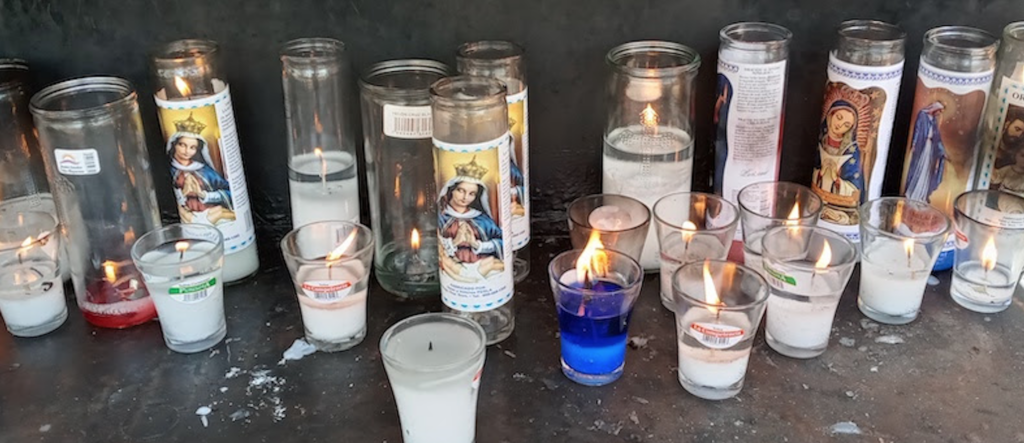
Envisioning the Brown Mother by Nicolás Dumit Estévez Raful on Pilgrimage to the Hispanic Society Museum & Library with La Virgen de Altagracia.
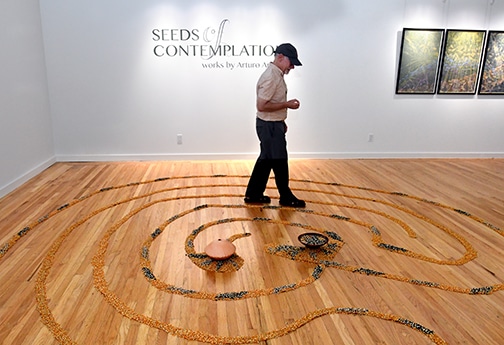
Seeds of Contemplation by artist Arturo Araujo, SJ hosted by the Doug Adams Gallery, Center for the Arts and Religion, Berkeley.
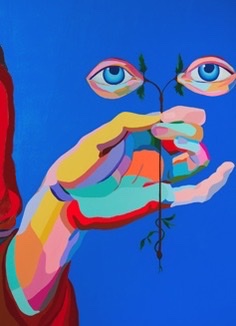
Nauageo (wreck) is a performance series of short plays by Erik Ehn, oriented by the writings of St. Paul. The intergenerational, intercultural, and interdisciplinary Great Jones Rep Co takes on St. Paul as a challenging conversational partner in a series of site-specific performances, installations, and live and digital works. nauageo focuses on perseverance through suffering — including the suffering-through of activist plans based on love’s ideals. The various projects, primarily, directed, designed, and performed by members of La MaMa’s only repertory company will serve as a shipwreck and constellation surrounding Ehn’s The Weak and The Strong (based on the letter to the Romans), directed by Glory Kadigan and running at La MaMa’s Downstairs Theater from Dec 8–18th. Video and audio installations will be available before performances and live, short works will be presented as post-show events 12/15–17. Click ‘view exhibition’ to see schedule below. To view the conversation live for Love’s Long Walk, tune in at 2pm Saturday, Dec. 10 by clicking here.
Geografías Paralelas, “parallel geographies,” is an exhibition of artworks by the artist collective PESARE. Formed of three artists who migrated to the USA as young adults from Latin America and the Caribbean, PESARE seeks to create transcendence with equilibrium and balance by basing their work on their multicultural and bilingual experiences.
The Hermitage of Landscape
The Hermitage of Landscape, the opening exhibit at the NEW Doug Adams Gallery, features the luminous landscape paintings of Bay Area artist Nicholas Coley. Painting en plein aire, Coley experiments with light and shape, producing images that range from realism to abstraction. Familiar Bay Area sites – Mt. Tam, Baker Beach, Tennessee Valley, the Berkeley Hills – take on other-wordly qualities.
Crossings/Mojándose: Works by Sandra C. Fernández
GTU library ‘Journey of the Wise Fool’ Tarot Card Exhibition, curated by David Stiver
Blackfriars Gallery pilgrimage materials
The Blackfriars Gallery and Library maintains a focused art collection and library in order to 1) identify and preserve objects that relate to the history of the Catholic Church, the Dominican Order and Western Dominican Province, and the relationship between religion, culture, and art; 2) to make these resources (art and books) available for the education of DSPT students and the GTU community, with a specific focus on the relationship between art, beauty, and Catholic worship and culture; and 3) to engender mutually enriching conversations with contemporary culture. The Gallery contains Spanish Colonial, liturgical vestments, St. Dominic’s Press engravings and prints, and holy cards and engravings from the 16th through 20th centuries.
There are a number of items related to pilgrimage – both sacred objects attached to specific pilgrimage sites as well as what might be called the ‘material culture of pilgrimage’ including prayer cards, Mexican milagros, reliquary chests, an 1893 playbook for Alfred Lord Tennyson’s Becket, and a well-developed collection of materials related to the Oberammerau Passion Play and pilgrimage in the Bavarian Alps. Additionally, the Biblical Movie Posters collection has a variety of materials available for study such as Norman Rockwell’s design for Franz Werfel’s The Song of Bernadette (1948).
The collection catalogues can be accessed here.
Camino Paintings by Gretchen Markle
In 2008, I went on a great adventure. After flying into Amsterdam and travelling by train down to the southwest corner of France, I began a pilgrimage. Starting in St. Jean-Pied-de-Port in the French Pyrenees, I followed a very ancient pilgrim route across Spain to Santiago de Compostela in the northwest. I then continued on out the to coast at Finisterre and Muxía. It was a long walk – almost 1000 km (over 600 miles).
Since I had to carry everything, including my sleeping bag, on my back, I took travel watercolours rather than my oils or pastels. (They’re much lighter and much less hassle.) I had hoped to do at least one painting/drawing every day, both as a record of my trip and as a way to really see. Luckily, I also took along my camera, because as they say, “the best laid plans of mice and men/often go awry” (“the best laid schemes o’ mice an’ men/gang aft agley”). The watercolour plan didn’t work out. It rained and rained, and then my watercolour paints all ran together. I guess the watercolours weren’t meant to be.
However, around Christmas, 2008, I began to paint in oils using my photographs and memories as reference. I spent three wonderful weeks at the Banff Centre, where I continued this exploration of both the outer journey and the inner journey of the Camino. When I returned home to Metchosin, the adventure carried right on.
The final paintings were exhibited at the Martin Batchelor Gallery, 712 Cormorant St., Victoria, B.C. in 2009.
Academic Courses
Dr. Aaron Rosen (Board), Wesley Theological Seminary, “Theological Themes in Fiction: Spiritual Journeys”
From the Epic of Gilgamesh to the Odyssey and the Book of Exodus, people have recounted travels that changed their lives. Travel is not just about transportation, it can also be a mode of transformation. In this course we will focus on journeys that lead to spiritual awakenings. We will take the classic American ‘road trip’ as our point of departure, exploring spiritual highs and lows, from Jack Kerouac’s euphoric On the Road to the dystopian vision of Cormac McCarthy.
Dr. Kathryn Barush, GTU “Camino Ignaciano” (with Julie Rubio, SP2022)
This course will explore the meaning of pilgrimage within the context of the Ignatian spiritual tradition. Students will have the opportunity to create an intentional faith community both in the classroom and on the road during a two-week pilgrimage in Spain along the Camino Ignaciano. Course materials will include Ignatius’ own writings as well as critical texts by a diversity of modern authors and interpreters. There will be a particular focus on the compatibility with hallmarks of Ignatian spirituality (contemplation in action and the important tenet of finding God in all things) and various aspects of pilgrimage practice today. Coursework will include reading, lectures, discussion, and a final project. Students will also be expected to participate in Camino planning and fundraising.
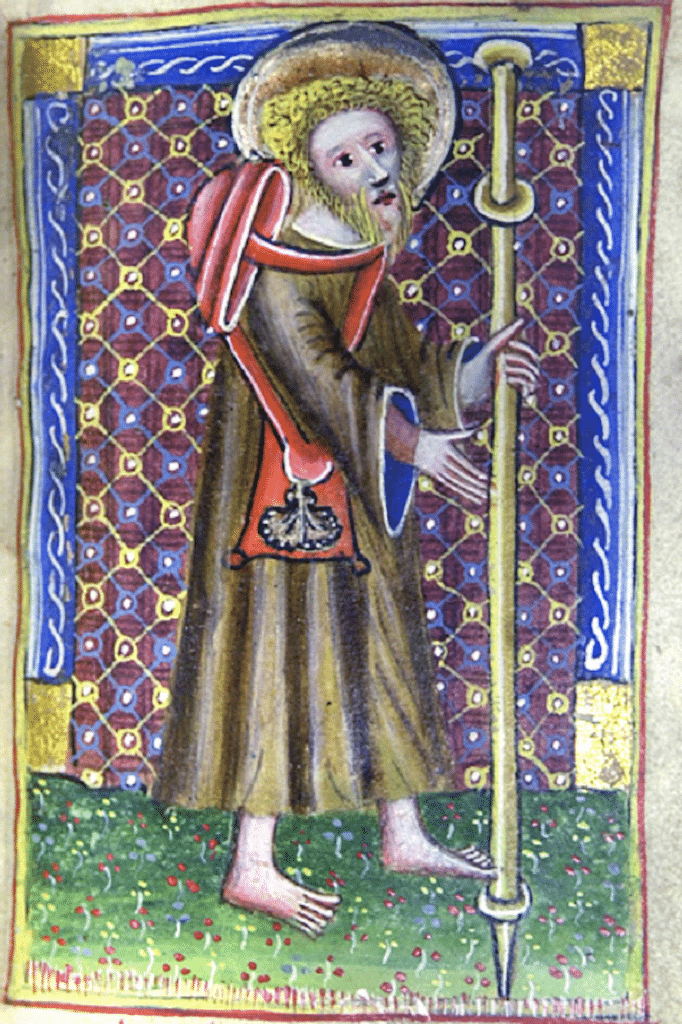
Dr. Kathryn Barush, GTU “Art and Pilgrimage” (SP202)
Geoffrey Chaucer famously wrote that ‘folks long to go on pilgrimage.’ Indeed, traveling over long distances to a sacred destination is an important ritual practice that has crossed cultures and time. Such journeys have inspired legends, folk-stories, and artistic representations from the early Christian centuries to today. Using a cross-disciplinary approach, this course surveys the relationship of art, material culture, and Christian pilgrimage practice through a close examination of major shrines and their dedications and decorations, paintings, pilgrimage badges and other souvenirs, films, and surrogate sites of pilgrimage such as maps, labyrinths, and manuscripts. We will address the literal and metaphorical meanings of pilgrimage and the conjunction of artistic practice and contemplative prayer.
Dr. Kathryn Barush, GTU “Virtual Sacred Spaces” (Spring 2020)
The novel coronavirus pandemic has changed the way we have prayed, meditated, worshipped, and even broken bread together as we have moved our sacred gatherings into ‘virtual’ spaces. This course will draw on collective resources to offer a space to think more carefully about composing sacred spaces as a global community. The online format is challenging in many ways, but can also be democratizing, offering a way for those with travel restrictions, different abilities, or health challenges to share in community events that would otherwise prove difficult. We will consider a number of virtual spaces including pilgrimages and pilgrimage sites, worship services, yoga practice, and museums/exhibitions and hear from those who organized and instated such opportunities in Spring of 2020. Students will have the opportunity to create their own virtual sacred space as a final praxis project.
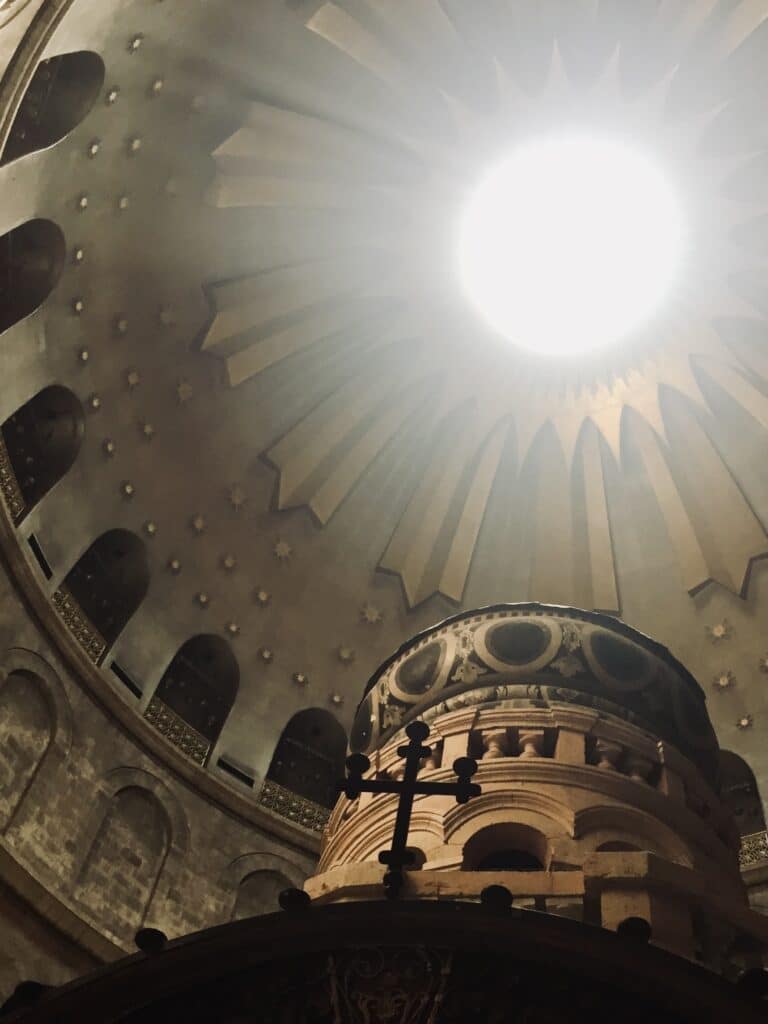
Rev. Kenneth Schoon, GTU “Kairos, Holy Land, and Pilgrimage” (Fall 2022)
Course #: HRPR-3000
This course-cum-virtual travel seminar receives the 2009 document Kairos Palestine as an invitation from the region’s indigenous Palestinian Christians to reflect theologically and substantively on Christian Holy Land pilgrimage. Course readings introduce critical frameworks in pilgrimage studies, decolonial studies, and liberation theology. Assignments, virtual travel experiences, and guest speakers introduce students to the people and places of the region, its history and significance in Judaism, Christianity, Islam, and the Bahá’í Faith, and the contemporary geopolitical landscape. Through the Kairos document, students will examine local Christian perspectives on militarism, non-violent resistance, peace, justice, reconciliation, and interfaith solidarity.
This course is designed for MDiv, MTS, or MA students in their 2nd year or above. DMin and PhD students may upgrade to a 4000 level course. While the course focuses on Christian pilgrimage, with readings and virtual travel itineraries centered on Christian traditions, students from other religious traditions may complete research projects exploring other pilgrimage sites in the area. This course would serve as excellent pre-trip preparation for anyone planning to go on or lead a pilgrimage to the region.
Dr. Kathryn Barush, “Marian Art” (Spring 2023)
QUEEN OF HEAVEN, MOTHER, ADVOCATE, OUR LADY OF VICTORY, STAR OF THE SEA – From the early Christian centuries to today, representations of the Virgin Mary have evolved and changed, and are as diverse as her many titles. Using a cross-disciplinary approach, this course will examine the making, meaning, and reception of Marian images within the various social, religious, and cultural milieus from which they emerged. For example, we will consider Greek icons depicting Mary as Theotokos, Italian Renaissance imagery of the Virgin and Child, nineteenth-century portrayals of Mary as the Immaculate Conception, Marian images associated with social justice movements, including Black Lives Matter, images of Mary in non-Christian contexts (for example, in the Quran) and vernacular Marian shrines.
Around the GTU
Fernandez and Ross, Doing Theology as if People Mattered: A collection of essays by faculty members at the Jesuit School of Theology of Santa Clara University exploring the practice of contextual theology in the classroom and beyond, in service, international immersions (including pilgrimages), and interreligious dialogue.
Route Resources
Libguide for the Arbaeen Pilgrimage, submitted by Dr. Mahjabeen Dhala
Geografías Paralelas, “parallel geographies,” is an exhibition of artworks by the artist collective PESARE. Formed of three artists who migrated to the USA as young adults from Latin America and the Caribbean, PESARE seeks to create transcendence with equilibrium and balance by basing their work on their multicultural and bilingual experiences.
Newsletter Archives:
To read our Fall BAIPP Newsletter, click here.


